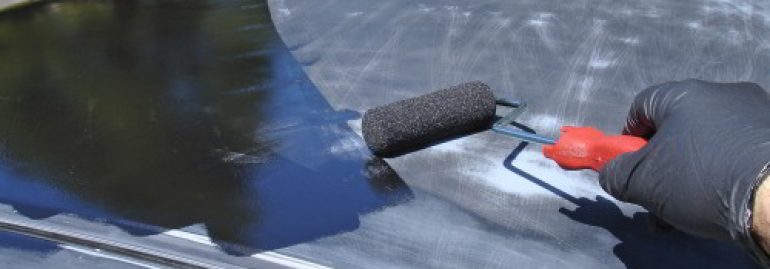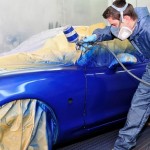This article will teach the automobile enthusiast how to do the bodywork on their car – mainly how to do a great paint job.
So you have decided that your car needs a new paint job. If you do this by yourself it will cost much less money then if you get it professionally done. There are many items to get if you are painting your car though. If you want to paint the car by yourself and you have no idea how to do it, it is best to watch a body man at a local garage do the job. It will be time well spent since you will be able to observe many details that will help you more then reading hundreds of articles.
If you are painting your car just because there are some small chips of paint that are gone, a better idea might be to just touch up those areas. To do this, first clean the area you want to touch up. Then you need to build up the paint just above the original level, and then gently sand it down. You then need to spray a touch on the sanded area to give it back the original shine, but then it will be just as before. This method is only suited for solid colours, metallic colours may come out blotchy. This method is only suitable if the chip is very small, such as caused by a small rock, not long scratches.
First you need to strip all the paint from the car. A chemical paint stripper will be the best bet. Make sure that your work area is clean and well ventilated and dust free. Wear gloves and protect your eyes with goggles. If the stripper comes into contact with your skin, rinse it immediately with water to neutralise it; the paint stripper is highly corrosive and harmful for your skin. Read the directions of the paint stripper carefully and apply the stripper all over the car with a paintbrush. Cover the area with clear plastic (available from any hardware stores) so the fumes will be trapped inside and will work faster on the car. Wait for the allocated amount of time, and remove the plastic. Now you can start to scrape off the paint with a putty knife or a paint scraper. To neutralise the paint stripping chemical the car should be rinsed with water. If necessary apply the chemical stripper again, and if not, sand the car to make it even and more adhesive for the layer of paint you will apply to it.
Now you will need to apply masking tape at all the windows and parts that you do not want to apply the paint on. Make sure you do a very good job at this, it will look quite bad when the pain is on the window frames or on rubber all over the car. This job is very detail oriented and you should not leave out any part of the car.
Now you will be able to start the paint job. Spray a grey lacquer or urethane primer over the entire surface of the car and let it dry completely. Remember to keep the dust off the car. This will be accomplished best by making a static storage above the car that will attract the dust, like hanging a few balloons that you first rub above the car. You can also try to make the car not static by attaching a wire to the frame of the car and having it touch the ground. Apply at least four or five coats of the primer. A great way to practice your painting technique is by applying the primer. This coat can be removed if you do the job incorrectly and you can apply seven or eight coats if you like.
After you’re comfortable applying the primer you should use the real colour since it is more expensive then the primer. Practice first on cardboard for the correct distance; too close will be too wet and will create runs, and too far will look dusty. After four or five coats of the grey primer, apply one light coat of a red primer. This coat will, when sanded, guide you to the high and low spots on the car and will help you spray on the paint better. If you notice dents (when the red primer can’t be sanded off) you need to consider putting filler on the car to mask those spots.
Next apply a sealer all over the car, and let it dry at least for one hour but not more then four hours. The sealer will make sure that the car will not rust and will keep the paint from chipping off.
After the sealer is dry you are able to paint the rest of the car. Make sure that you spray the colour evenly and in a thin coat to avoid having drops show up and dry in uneven blotches. You will need to keep the spray head at least 8 to 10 inches away from the car, and move in uniform even strokes across the car. Avoid runs and build up of paint.
When painting, start at the top where you have to reach. That way you will not drag your coat over a freshly painted area. Spray the first coat on very lightly and make sure that the pain is even. Your car will require about seven or more light coats. If you are using metallic paint you will need to spray the pain in alternately horizontal and vertical patterns to bring out the shine better and make it look professional. Sand after every coat you spray, in the same direction as the spraying, and use very fine sandpaper (start with 600 and work your way to 1000). Then you will be able to take off the masking tape, polish the car, and voila! You are finished.
Also here’s a handy “Paint Defect Troubleshooting” guide. It’ll help you with some paint issues.




